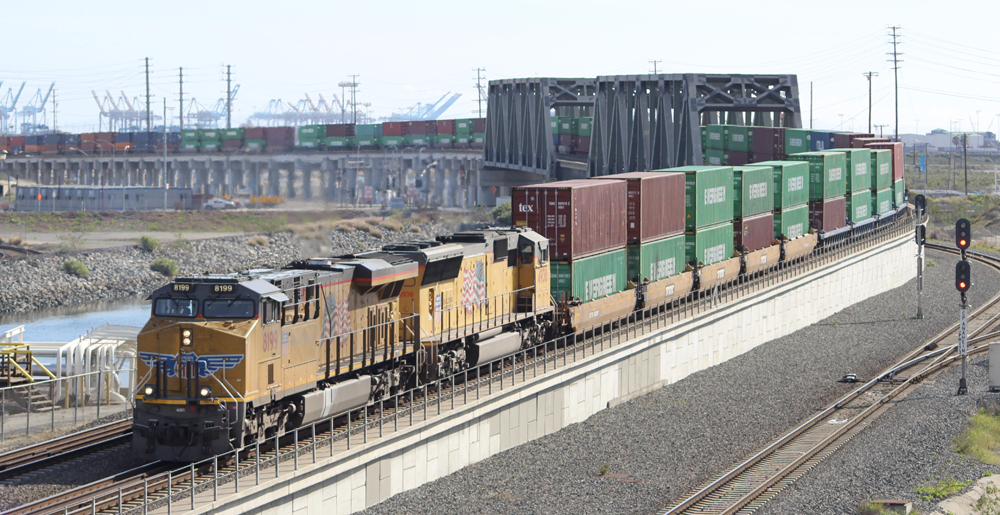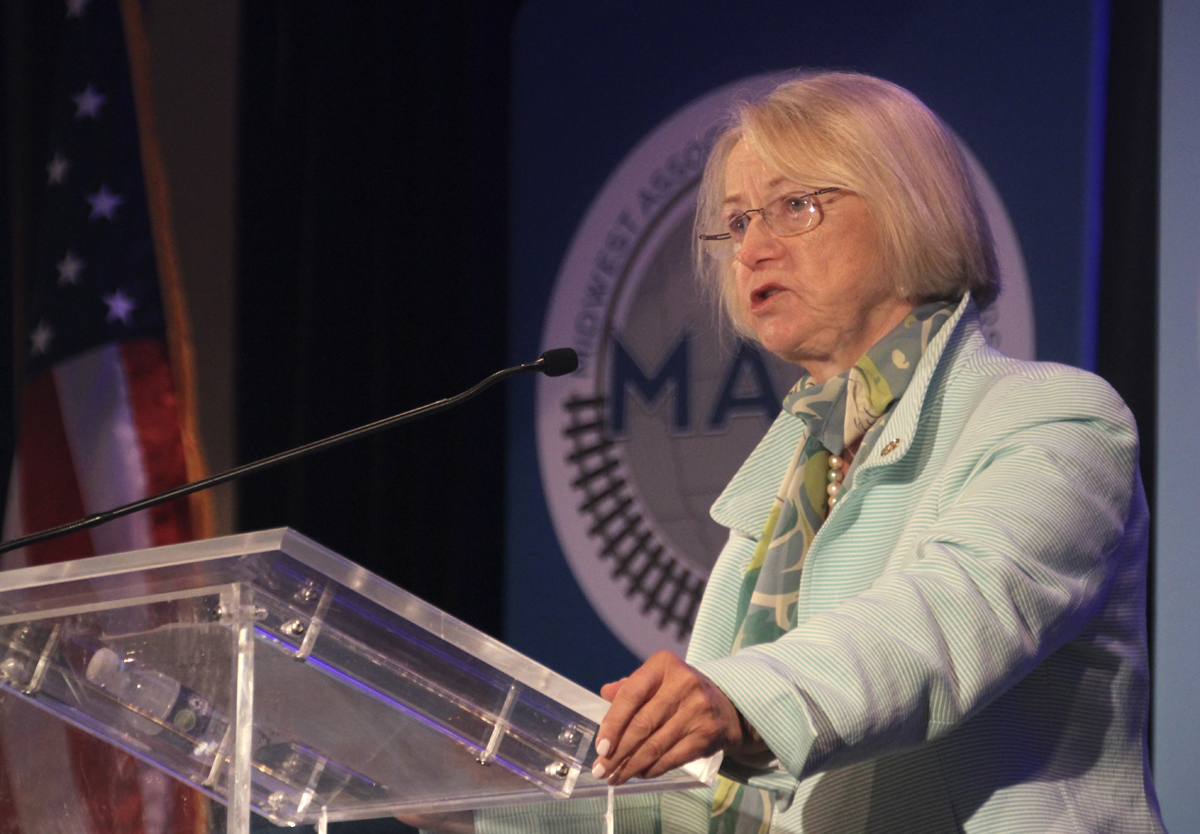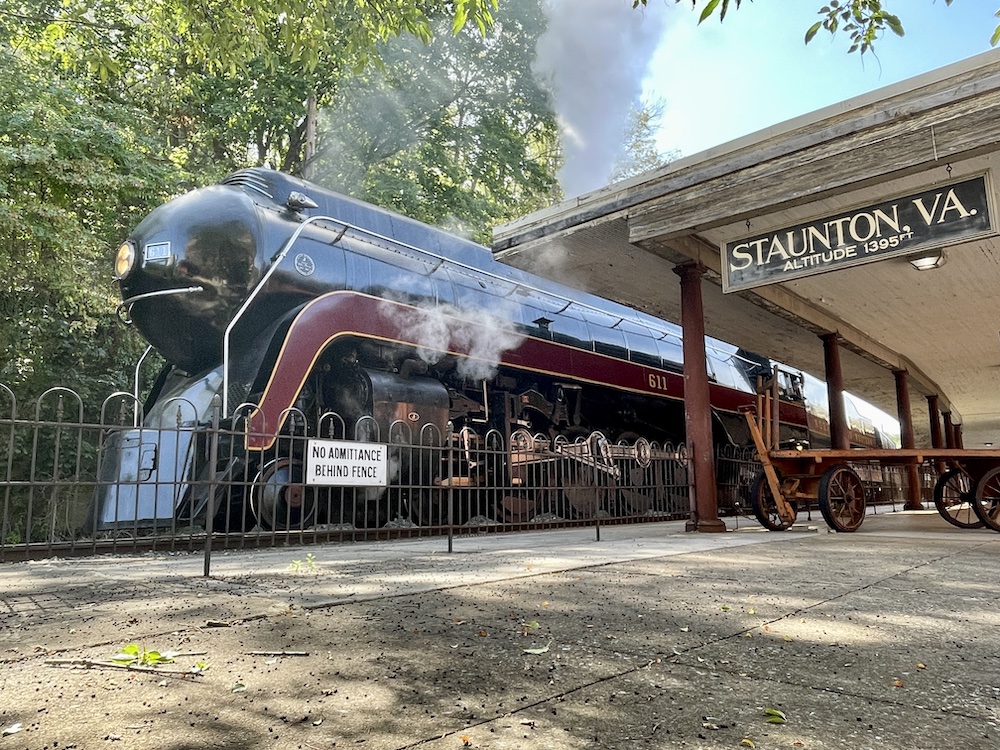
Don’t expect North American intermodal traffic to break out of its slump anytime soon.
The decline of imports from pandemic-related highs, the ongoing shift of imports to East Coast and Gulf Coast ports, and tough truck competition are all contributing to the 10% decline in intermodal volume for the year to date, says Todd Tranausky, vice president of rail and intermodal at freight forecasting firm FTR Transportation Intelligence.
Intermodal volume also remains about 10% below the five-year average, showing how far volume must grow to get back to normal levels, he notes.

Intermodal will struggle versus truck through the middle of 2024, Tranausky said on a State of Freight webcast today. “Unfortunately for intermodal, it doesn’t control all of the factors that are pressuring its volumes,” Tranausky says.
The ongoing labor negotiations at West Coast ports have prompted importers to shift to alternatives on the East Coast and Gulf Coast over the past year. In fact, imports are now higher on the East and Gulf Coasts than they are on the West Coast. But the shorter length of haul makes containers less likely to take trains inland from East Coast and Gulf Coast ports.
Making matters worse: Wildcat job actions that have slowed or temporarily shut down some port terminals at Los Angeles and Long Beach, Calif., recently, Tranausky says. Container ships are once again queuing offshore as a result, he says.
It remains an open question how much container volume will shift back to West Coast ports once a new contract is reached with dock workers, Tranausky says.
Intermodal’s largest lane — Southern California to Chicago — has seen its share of the overall intermodal pie fall to 19.2%, down from 20.1% prior to the pandemic. “One percent may not sound like much, but it is a large amount of volume,” Tranausky says.
Tranausky says it’s unclear how much ongoing service problems at BNSF Railway and Union Pacific are contributing to the intermodal downturn.
“It certainly doesn’t help,” he says. But the lower volumes should boost the railroads’ service recovery efforts, Tranausky says.
Meanwhile, plenty of truck capacity and declining rates both pose a challenge for domestic intermodal.
Carload volume has returned to its five-year average and is up 2.5% this year across North America, according to Association of American Railroads data.
That’s good news, Tranausky says, but service is not back to normal levels. Terminal dwell remains stubbornly high, meaning transit times are extended. “That’s a problem,” Tranausky says.
It will take a while longer to get service to where shippers, regulators, and railroads want it to be, he says.
One sign that shippers don’t believe service has recovered from crew shortages at the big four U.S. railroads: The number of cars online has yet to come down.
But Tranausky says the good news is growth in what FTR calls economically sensitive carload freight, which is everything except coal, grain, and petroleum shipments. This segment of carload traffic is performing better than carload as a whole, Tranausky says, which should set the stage for growth in the years to come.
Railroads can’t expect help from the broader economy, FTR says, due to anticipated sluggish GDP growth through next year.














Those actions at the west coast ports are not wildcat, they’re actually integral to the Longshoremans ability to wrangle exhorbitant concessions from the Port operators. They are probably the laziest workers that get paid the most amount of money out of union jobs today. I’m still waiting for the day when one port operator has enough and just replaces the entire staff with automated cranes like they do in Asia, then no more need for longshoreman to load/unload container ships.